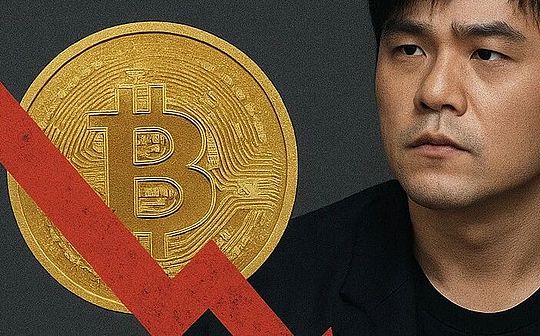
As the U.S. government shutdown continues, it’s a good time to take a step back and examine a key decision by the SEC (U.S. Securities and Exchange Commission).
This decision may affect cryptocurrency industry innovation, financial advisors and ordinary investors in the coming years.
The SEC recently passed a low-key but landmark change:Approval of Common Listing Standards for Cryptocurrency Exchange Traded Products (ETPs).
This means,Exchanges do not need to submit a separate rule application for each eligible cryptocurrency ETP to list it.This structural change has put an end to the uncertain state of ETP that required “case-by-case review” for many years.
The impact of this development cannot be overstated;It should rank among the industry’s major breakthroughs, is as famous as key nodes such as the launch of Bitcoin futures on the Chicago Mercantile Exchange (CME) in 2017, Coinbase’s landing on Wall Street in 2021, the Ethereum Merge in 2022, and the approval of the spot Bitcoin ETF in 2024.
The following four major reasons determine that this new regulation is a watershed moment for the cryptocurrency industry:
1. The cycle is shortened and the new ETP is more feasible
Previously, each ETP had to go through the SEC’s lengthy review process, which could take up to 240 days.According to the new regulations, new products that meet preset standards can be launched as soon as 75 days.By regulatory process standards, this is “light speed”.
This adjustment reduces the issuer’s uncertainty and holding costs, which is crucial: launching an ETP requires actual funds and resources. Seed funds, legal/registration fees, listing costs and ongoing marketing expenses will continue to accumulate when the application is in an uncertain state.
The shortening of the review cycle makes more strategies economically feasible, and the ETP product pipeline is also enriched.
It is expected that under this simplified framework,A large number of spot token ETPs will be launched one after another,It includes not only Bitcoin (BTC) and Ethereum (ETH), but also other currencies such as SOL and XRP.
For the cryptocurrency industry, which has been stuck in an audit impasse for a long time, this is undoubtedly the sound of the “starting gun”.
2. Financial advisors can finally include crypto assets in their investment portfolios
Until then, there have been many obstacles to incorporating cryptocurrencies into traditional investment portfolios.Although a handful of Bitcoin and Ethereum funds have emerged in the past two years, many mainstream brokerages and registered investment advisors (RIAs) still shy away from cryptocurrencies.
A typical case is Vanguard Group, which has an asset management scale of US$10 trillion. This institution has always refused to provide customers with investment channels for spot Bitcoin ETFs.
This conservative stance has left countless investors with little choice but to “watch the market” and left financial advisors with few compliant cryptocurrency allocation options.
SEC’s new rules open doors for these investors and advisors.With a streamlined path to listing for diversified cryptocurrency ETPs, advisors can finally provide clients with index-like cryptocurrency exposure through a familiar platform.
Within 48 hours after the new regulations were introduced, Grayscale Investments received approval to transform its “Digital Large Cap Fund” into the “Grayscale Crypto 5 Index ETF” (Grayscale Crypto 5 ETF).
Although the product is still on hold and trading will begin only after final approval.The transformation allows its clients to invest in a basket of the five largest cryptocurrencies by market capitalization.
With products like these, wealth managers will now be able to allocate cryptocurrency as easily as they would an S&P 500 index fund or a gold fund.
In effect, the “normalization” of cryptocurrencies in standard brokerage accounts,This means that retirees can hold digital assets together with stocks and bonds in individual retirement accounts (IRAs).
Registered investment advisers (RIAs) can also incorporate cryptocurrencies into asset rebalancing strategies without complex operational procedures or compliance headaches.
3. Regulated ETPs promote the integration of cryptocurrency and banking
In addition to improving accessibility,The development also deepens the integration of cryptocurrencies into traditional finance.
When digital assets are in a regulated product vehicle, they can integrate into the existing financial system in a more powerful way.
JPMorgan Chase, which has long been skeptical of cryptocurrencies, recently announced that it will accept shares of cryptocurrency ETFs as collateral for loans, similar to the margin loan model that uses stock ETFs as collateral.
As more ETPs are brought into standard custody and reporting systems, banks will be more willing to provide loans against these assets.
Cryptocurrency holdings can be used to pledge the ability to borrow,Make cryptocurrencies an “active participant” in banking and credit markets.
Today’s cryptocurrencies are no longer isolated, they are becoming one of the pillars of the financial system, just like stocks or US Treasury bonds.
4. Clear rules spur a new wave of innovation
Perhaps the most noteworthy change in this transformation is the adjustment of core concepts at the regulatory level.
After years of uncertainty, U.S. regulators finally signaled:Cryptocurrencies should be included in the existing financial system, not outside it.
SEC Chairman Paul Atkins has launched the “Cryptocurrency Plan”, instructing the SEC to sort out relevant provisions of securities laws to pave the way for the market to migrate to the chain.
This top-down clarity of purpose fuels innovation.When companies have clear regulatory boundaries, they can move forward with greater confidence.
At present, traditional financial institutions and startups have begun to rush to launch products based on the updated rules, ranging from multi-currency index ETPs to experimental interest-bearing token funds.
The results of this change will not only be the emergence of new ETPs, but also a test of U.S. competitiveness.In the future, we may see tokenized real estate ETFs or other thematic cryptocurrency products.
If the United States establishes relevant rules, innovation will happen here; if not, innovation will flow overseas.By rapidly integrating cryptocurrencies into mainstream financial products and explicitly supporting an “on-chain future,” the U.S. government is positioning the United States to “remain competitive” in the cryptocurrency space and perhaps even regain its leadership position.
This rule adjustment is one of the most significant changes to the cryptocurrency industry in recent years.
This is not just about the ETP itself,It means cryptocurrencies are recognized as a legitimate part of modern investment portfolios.
For financial advisors, this means gaining the ability to more comprehensively meet customer needs; for investors, it brings more choices and convenience; for innovators, it marks the return of the United States to the cryptocurrency track.
Although the process of integrating cryptocurrency into the daily financial system has been long, now this process has officially begun——The pace is accelerating, driven by clear and unambiguous rules.
The road to a truly on-chain financial system has been opened, and at least in my opinion, its prospects are worthy of optimism.







